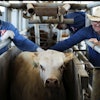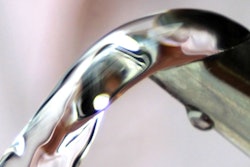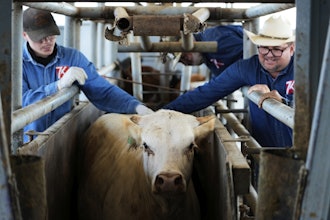The only way to ensure that measurements deliver
the kind of cost, quality and revenue results that help
improve profitability over their entire lifetime is to
choose the right procedure and schedule to
periodically maintain, calibrate and adjust your scale.
Industrial environments are tough on scales. Periodic
calibration alerts you to a device that is out of
specification, such as a faulty sensor, cable or
mechanical component, and identifies poor
performance due to debris, abuse, temperature or
water ingress. Therefore, the frequency of calibration
and routine user testing should coincide with a a risk
analysis for each weighing process.
Although industry standards and regulations, such
as ISO9001, BRC, FDA and GMP, do not recommend
how often measuring devices need to be calibrated
and tested, there are several steps you can take to
ensure your scale achieves maximum efficiency and
profitability.
Risk-based Analysis in Five Steps
A major revision of ISO9001 in 2015 has changed
to include risk-based thinking. Here are the 5 steps
you need to know to help assess how frequently
calibration and routine testing should be performed:
Are You Ready for ISO9001:2015?
Optimize Calibration Efforts in Five Steps
Se
rv
ic
e
Ch
ec
kl
is
t
Importance of Calibration
2 METTLER TOLEDO
Service Checklist
© 11/2016 Mettler-Toledo GmbH
Se
rv
ic
e
Ch
ec
kl
is
t
Step 1
Evaluate the impact of wrong/inaccurate weighing
results on your business process. Examples include:
• loss of material and time
• out of specification
• frequency of production stoppage
• potential product recall
• damage to your reputation
Step 2
Determine the impact of wrong measurements
on staff, consumers and the environment.
Step 3
Estimate the probability of the faulty measurement’s detection
through existing testing methods prior to shipment.
Severity
(Impact)
Likelihood
(Probability)
Hig
her
ris
k =
m
ore
te
stin
g
1 2
3
4
5
Weight
500g
500g 500g
Calibration &
Adjustment (by service)520g
Smallest net weight
Sa
fe
ty
Fa
ct
or
520g
Calibration Interval Calibration Interval
Time
Calibration and Adjustment (when necessary) by authorized service technician
Routine testing by the instrument user
Step 4
Determine the smallest net weight that must be weighed on the scale. By using your scale
above this limit will ensure continuously good measurements.
Step 5
Define which safety factor should be applied. The safety factor heavily depends on the
environment. If the environment contains high amounts of vibration, wind or other
disturbances such as untrained users, the safety factor should be set higher.
www.mt.com
For more information
Se
rv
ic
e
Ch
ec
kl
is
t
Risk-based Selection, Calibration and Operation
METTLER TOLEDO has developed Good Weighing
Practice™, a standardized scientific methodology for
secure selection, calibration and operation of weighing
equipment based on a thorough risk analysis described
in the previously mentioned five steps.
The METTLER TOLEDO GWP specialist will support you in
defining the right intervals for calibration and routine
testing of your weighing equipment based on an
individualized risk-assessment and help you implement
this into your quality management system.
Risk-based calibration and routine intervals are intended
to detect any errors that could lead to potential quality
problems, business disruption, health issues and loss of
material or time. In essence you decide the appropriate
service based on your anticipated risks.
To learn more or to schedule an appointment with a GWP
specialist, visit www.mt.com/gwp.
METTLER TOLEDO Group
Service Division
Local contact: www.mt.com/contacts
Subject to technical changes
©11/2016 METTLER TOLEDO. All rights reserved
30388042
MT-NA MarCom
Optimize Calibration Efforts in 5 Steps
Calibration of weighing equipment is one of the most important activities within a quality management system. With routine equipment calibration and adjustment, you can measure safely, ensure compliance and avoid the costs of inaccurate measurements. Download this white paper to help you assess your weighing process knowledge and put calibration expertise at your fingertips.
Latest in Home






















